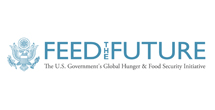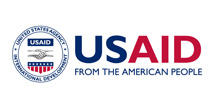Economic value of hides and skins in Somali Region
Project title: Economic Value of Hides and Skins, findings from Jarrar and Shebelle Zones, Somali Region, Ethiopia
Lead researcher: Kedir Jemal, Jigjiga University
Collaborators
Abdinasir Ahmed – Jigjiga UniversityHabtamu Atlaw – Jigjiga UniversityNejib Abdi – Jigjiga UniversityHassen Mohammed – Jigjiga UniversityMohammed Ibrahim – Jigjiga University
Research report – download the research report jemal-et-al-tev-skin-hide-report
Research summary
Pastoralism is a viable, vibrant and sustainable economic system which underpins the rural economy in East Africa. It accounts for a significant share of the informal and rural economy and contributes inputs critical to the formal economy, particularly milk and meat protein. Yet, its economic significance is typically understated, and its contribution undervalued. This poses challenges for decision-making, policy prioritisation, and attracting the investments necessary to ensure pastoralism persists. This study investigates the importance of pastoralism by examining the economic value of milk production, processing and trade in the Somali Regional State of Ethiopia through original research.
The study reveals that the production of hide and skins has limited financial value for pastoralist households and local communities, and as such is not a focus of rural livelihood strategy in Somali Region; but it has untapped potential and suffers from systemic issues that limit the economic value generation owing to quality, geography, transportation, scale economics in the local supply chain participants, and access to markets, technology and information.
We use our survey data to estimate:
- There are 3.9 million pastoralists in Somali Region in 600,000 households
- Managing a population of over 23million head of livestock (8.4 million TLU)
- Using official data, almost 6 million hides and skins could be produced potentially each year
- But actual figures show considerably fewer, at 1.6 million hides and skins produced annually, owing to over-estimated official off-take rates, live sales and mortality
- 450,000 H&S are traded each year in Somali Region – just more than one per household on average
- Yet, 93% of respondents view hides and skins as an important resource, but mainly for subsistence rather than for commercial reasons.
- On average live sales each year are 11.1% of herds, 2.6 million head of livestock
- Annual mortality from disease is 12.2%, 2.8 million head of livestock but for religious and market reasons the hides and skins are not sold
- Only 28% of respondents admitted to selling hides and skins after slaughter, with most being used for subsistence and domestic purposes.
- We estimate each household earns on average 29birr/yr (1.38 USD/yr) from hides and skins
- The potential value for the hides and skins in Somali Region is 7.3 million USD/yr, but we estimate 27% of this is realised, hinting at potential for value addition
- The current estimated annual revenue from hide and skins marketing for pastoral communities in Somali Region is an estimated 11.6 million Birr/ 0.55 million USD (per pastoral household, 29 Birr/ 1.4 USD)
- The potential revenue from un-marketed or unused skins from diseased livestock for pastoral communities in Somali Region is an estimated 93 million Birr/ 4.4 million USD (per pastoral household, 155 Birr/ 7.4 USD)
- The total current value of H&S in Somali Region is 134 million Birr/yr or 6.4 million USD/yr


